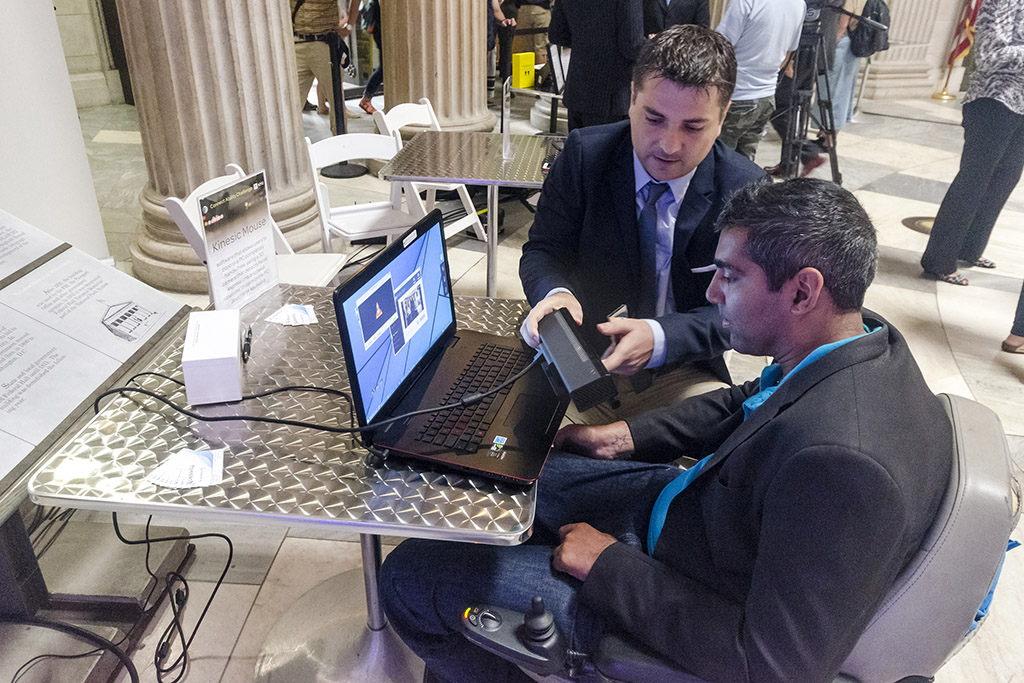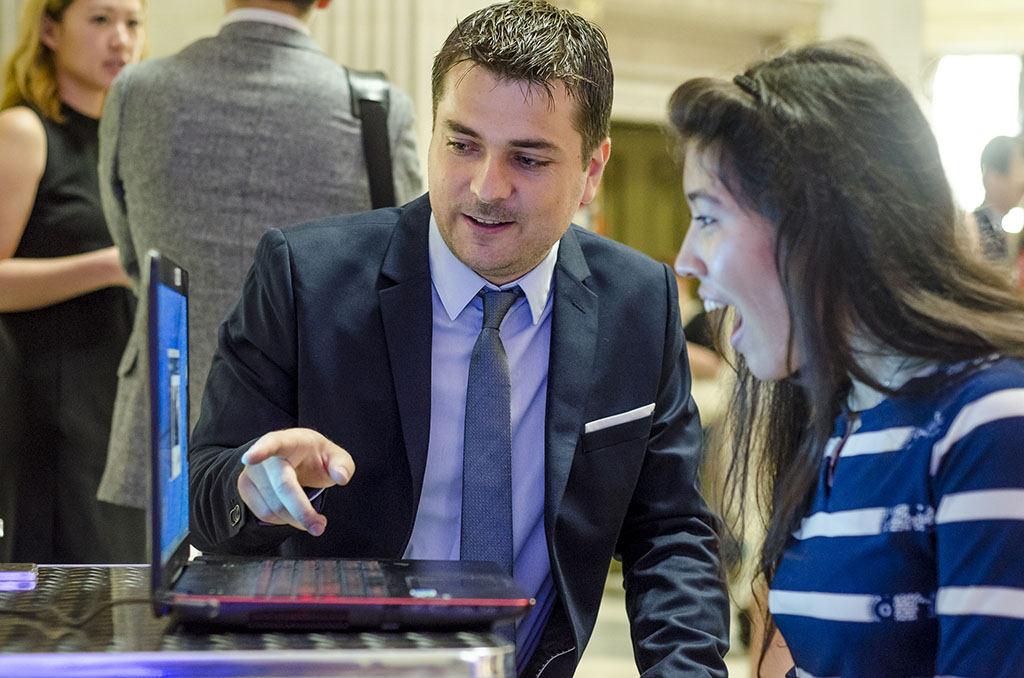Q&A with Markus Pröll, Grand Prize Winner of the AT&T and NYU Connect Ability Challenge
Markus Pröll accepting the Grand Prize and Best Mobility Solution awards for his Connect Ability Challenge submission KinesicMouse (photo courtesy of Markus Pröll)
We had the honor of being at the Federal Hall National Memorial when the winners of the AT&T and NYU Connect Ability Technology Challenge were announced last month. Huge congrats to Markus Pröll whose submission KinesicMouse won Bext Mobility Solution ($10,000) and the Grand Prize ($25,000). KinesicMouse is a software that allows users to control a PC completely hands-free by using a 3D camera that detects facial expressions and head rotations.
Markus took the time to answer a handful of questions for us. Did we miss something? Feel free to ask him on Twitter @xcessity.
Q: Tell us a little bit about yourself.
MP: My name is Markus Pröll and I live in Graz, Austria. I am a passionate video gamer. When I held my first Game Boy in my hands I was absolutely amazed by computer technology. Now, a couple of years later I am a software engineer working on accessibility software. I love the work I do and the incredible feedback I get from people keeps me going on a day to day basis. My vision is nothing less as to create the most powerful and affordable assistive solutions there are.
I got in touch with assistive solutions when working at the Laboratory for Brain-Computer Interfaces at the University of Technology in Graz, Austria. I soon realized that there is actually a lot of potential in software solutions that can help people access their computer. To create applications for people in need the university is just the wrong place to be so I decided to found a company back in 2012. This is how I started "Xcessity".
Q: How did you hear about the AT&T + NYU Connect Ability Challenge and why did you decide to enter?
MP: I heard about the Connect Ability Challenge via twitter. I am following many people that are related to AT [assistive technology] and someone posted a link to the challenge. When I read through the description of the challenge I was amazed that there are judges involved that have a disability themselves. Additionally, I am not going to lie, the prize money that was on the line was very appealing, too.
Q: Tell us a bit about your entry into the competition. Did you think you would win the grand prize?
MP: So my strategy from the first day when I saw this challenge was to win. It took me more than a week to create the video, which is insane if you think about the fact that it is only 3 minutes long. I also got great support from the people that use the KinesicMouse. They helped me with pictures, video footage and editing tips. I think I could not have done it without their help.
Q: Did you take a look at the other submissions? Were there any other projects that excited you?
MP: When the submission deadline ended the first thing I did was to browse through all the other projects that entered the challenge. I was astonished by the quality level of the submissions. The contestants came up with great ideas that can really have an impact on the quality of life for people with disabilities.
The submission I like most is called "Virtual Hands", an application that enables people to paint using virtual-reality glasses. Personally I see a lot of potential in this technology to be used as an assistive technology. It requires the work of true pioneers to explore these capabilities as there is nothing alike. This technology requires to create completely new input modalities and it is exciting to see how people solve these challenges.
Q: What has the response been after winning the challenge? What do you plan to do with the winning and what's next for you?
MP: The response has been great. The media coverage put the KinesicMouse in a spotlight. It was exciting to see how this attention unraveled. After the first media articles got published, more interview requests followed. The second wave of interviews was more related to media that is connected to disabilities and assistive technology. Now the first people that actually want to use the KinesicMouse have shown their interest.
The prize money of this challenge gives me the opportunity to focus on developing my assistive solutions even further. I have been looking for investments for a very long time, yet I did not find any investor that is willing to put money in such solutions. Everything we see today has gone through my hands. Things could be a lot quicker, but it is not easy to work without almost any resources. For me I know that I spend my time on something that is of true value. The KinesicMouse is an application that people really need. It is not one of another mobile app that nobody wants to spend even 1$ on.
Q: What does "diversability" mean to you? How can readers be helpful to you as your company grows?
MP: For me "diversability" means "untapped potential" and I hope this is going to change. I believe that one key to unlock this potential is actually technology. Of course there are many other variables involved in this equation, like awareness. Companies need to understand that hiring people with disabilities is not just a tool to build a better brand. It is literally about a change in perspective. Every disabled person is an expert - an expert in finding solutions that help them getting any job done. This mindset and way of creative thinking is something any company can benefit from. It is just a matter of putting anyone with the right skills in the right position.
So there is still a lot to catch up to. We are living in exciting times with a lot of new technologies on the horizon. What drives me really crazy is that there is put so little resources into creating things that really matter. How can it even be possible that one guy like me can create one of the most powerful assistive input devices by just combining technology that is already available? That's just something that strikes me most and shows how little effort is actually put into this.
Anyone can support me by actually spreading the word. Approach me with any idea you have. Make up your mind and think about the technology you already hold in your hands. Sometimes it does not take a whole lot to turn anything into a great assistive device.



